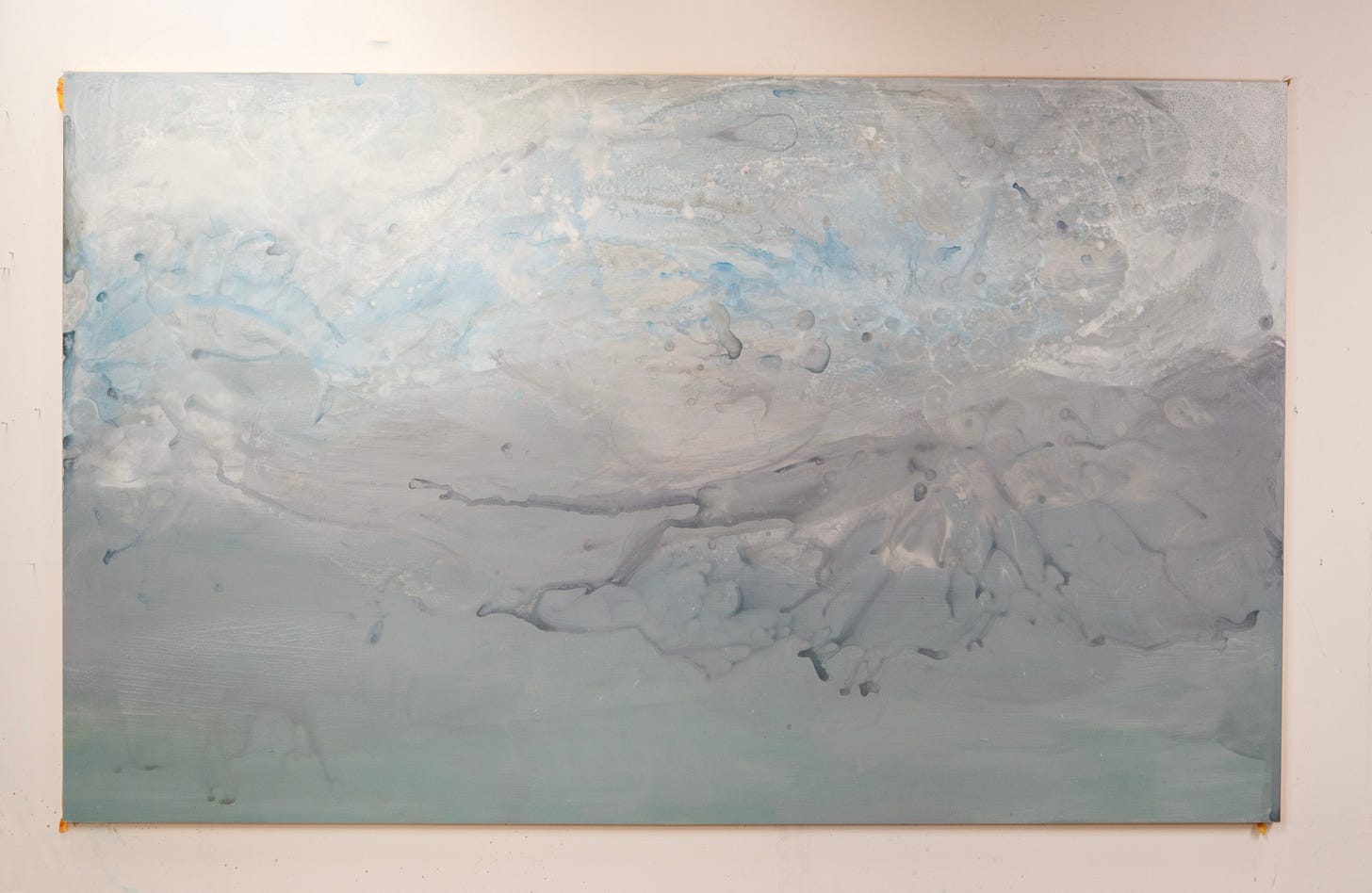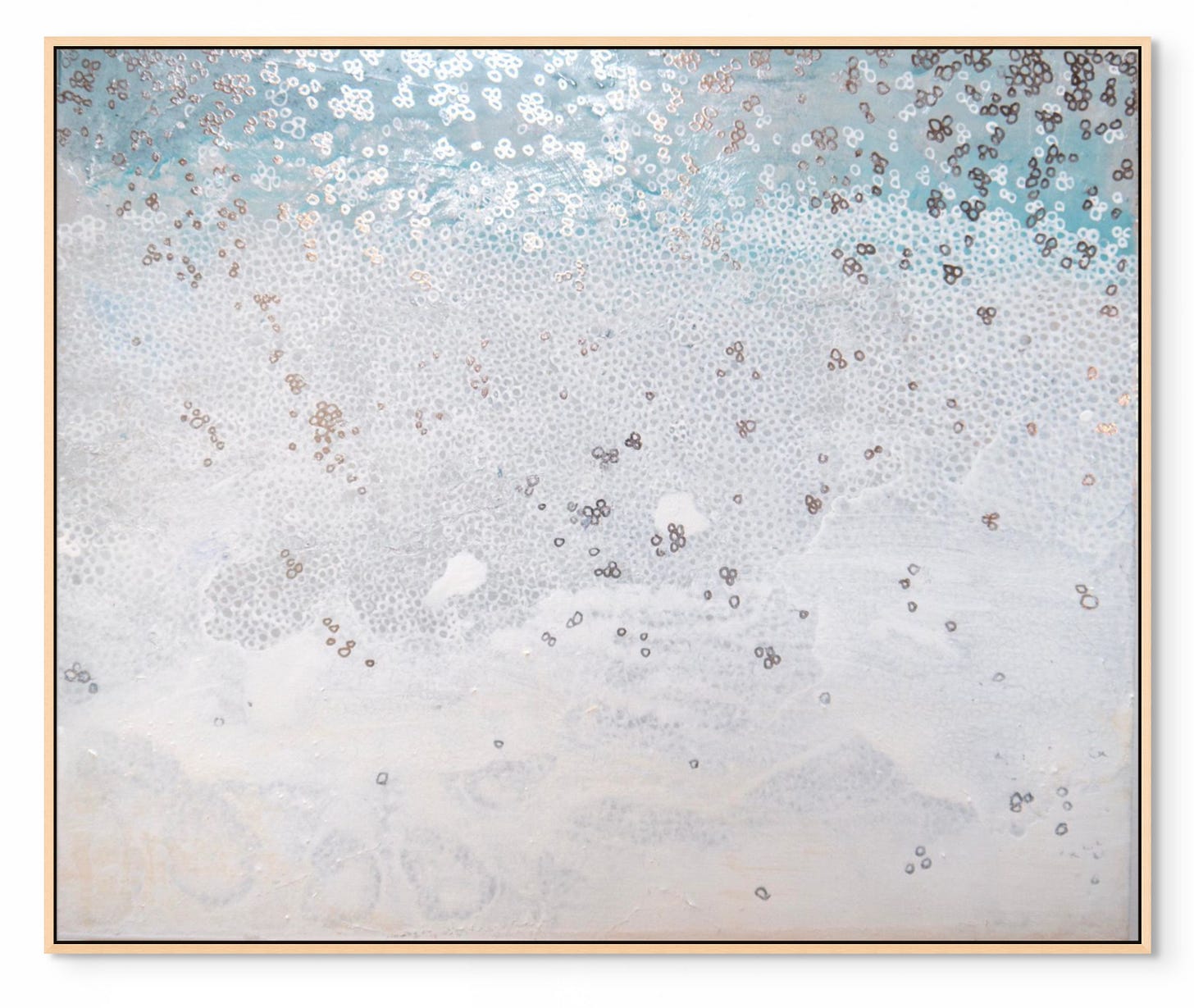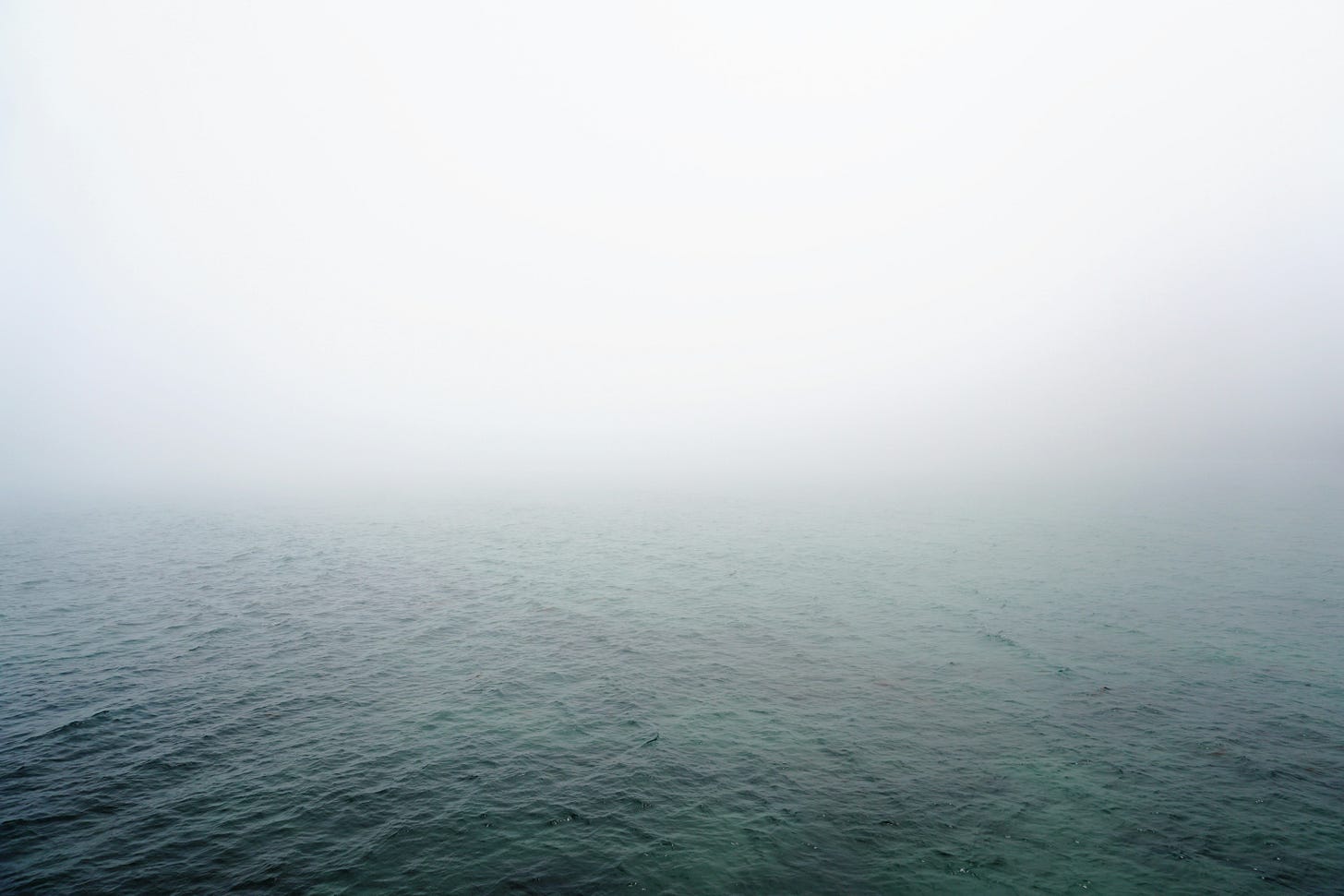Friends, we are moving deeper into the fog.
I mentioned last week that I’ve just started a new painting with a working title of Haar (the fog that rolls over Orkney from the sea). The role of a ‘working’ title like this is, for me, a compass bearing, offering a direction of travel. It may or may not be the work’s final name once it has reached its destination. But it’s a useful reminder of the questions I’m holding as work proceeds.
The work of making this painting, as with my others, begins with chance. Abstract layers are thrown down as runny washes of colour without much planning or preconception other than a mood or overall tone: quiet or energetic, light or dark, muted or contrasting.
Water makes its own marks here. It dribbles and pools in unpredictable ways, leaving sediments and textures as it evaporates. I work up several layers over time, making multiple adjustments, creating complexity in the surface that I can respond to in later layers.
Then things become much more deliberate.
The next stages are meticulous, slow, often mostly covering the underlying paint so it just peeps through a dense mesh of lines. There’s a lot of destruction at this stage, obliterating what’s gone before, overlaying it with something new. Rolling over the surface like a veil. Or a sea fog rolling in off the Atlantic. The appearance changes a lot from here, and not always in ways I can fully predict.
Each line, circle or dot is a breath, a moment, a heartbeat. Repetition unfolds into duration. Through long days in the studio the rhythm of this work is comforting, dependable, like rocking back and forth, knitting a blanket, following the breath, or the steady beat of walking. It’s a commitment to a practice. It may or may not lead to the desired outcome. It may take me on a long detour. I might get lost and have to reset a new compass bearing, and find myself arriving at an unexpected destination.
I’ve only just begun this stage. You can see the little circles just beginning to appear in the top right corner in the picture above. I’m not yet sure how far they will spread, or if I’ll leave some gaps. I’m feeling my way, as I said last week, as I move out into the fog of this painting. It’s a leap of faith. But it’s also an act of trust in a process I’ve become familiar with over the years.
Do the practice. Trust the process.
I’ll be posting more work-in-progress pictures in The Life Boat' subscriber chat as this piece evolves through the weeks ahead. Do share some of your own work-in-progress too - by way of gently encouraging each other along.
As I continue work in this painting I’m also reading and thinking about fog and clouds.
’s Climate Water Project has been a source of inspiration and wonder this week, especially the recent three-part series that looks in detail at how plants and fungi make rainclouds.Plants and trees seed clouds. They send water droplets into the air, wreathing themselves in mists, creating clouds that drift across entire continents spreading rain far inland. The blue haze of distance that hangs over certain forested mountain ranges such as, famously, the Blue Ridge Mountains, is made up of volatile organic compounds called terpenes. These are released by the trees and react to form airborne particles that gather water droplets that hang in the air, scattering light and creating the blue haze we see.
Forests release huge amounts of these terpenes, enough to significantly affect cloud cover at a global level. Researchers in the Amazon have discovered that, in addition to the compounds released by trees, fungi also release spores that combine with the terpenes to form a nucleus around which water drops can form, in what Alpha Lo calls a “symbiotic poetry of fungi partnering with trees to make clouds”. These tiny particles have a potentially huge effect on global temperature and rainfall.
It’s not just forests that generate cloud. Oceanic algae releases a sulfur aerosol called DMS that not only gives sea air its distinctive tang but also helps to seed clouds. A common type of algae, Pelagophyceae, it has recently been discovered, produces this substance in great abundance, and so helps to cool the planet. I had always thought that it was the action of wind over the ocean that scooped water up to bring us our abundant rain here in the UK. But it turns out that our rainfall, indeed the global climate, is impacted by an algae smaller than the point of a needle.
A life-filled ocean is a gigantic fog factory, making clouds that reflect the sun’s heat to cool the Earth, generating fresh water as life-giving rain, and sending sulfur back onto the land where it’s needed by plants and animals.
We, water-beings all, inhabit a porous, foggy, living weave of wetness alongside teeming algae, webs of hyphae threading loamy soils, clouds of sporulating fungi, and forests of turpene-scented leaves.
I’m trying to absorb this knowledge and slowly work out what to do with it, in the face of news of more droughts, more floods, too much rain, all-at-once rain, not enough rain, rain in the wrong place at the wrong time.
For now, fog soaks my brain. It will have to be enough just to acknowledge that we share this world with so many cloudmakers and tiny rain gods.
Join the Life Raft Co-Working Session
Needing some focused time to working on your creative projects? Join our creative co-working session every Wednesday from 3 pm to 4.30 pm UK time. It’s very simple. We say hello, say what we’ll be working on, then leave our cameras on and work together in quiet companionship for an hour, then sign off at 4.30 with a quick check-in chat. That’s it! If you miss a session or can’t make it live, a recording will be made available to paid subscribers for two weeks after the session. You can find it after the paywall below here.
That’s all for this week,
– Sam









